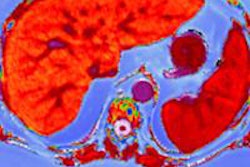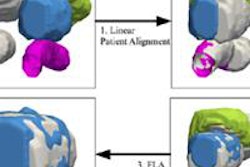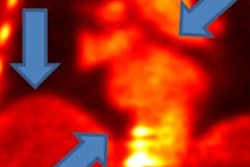Dear AuntMinnie Member,
A plethora of new software tools are becoming available to help radiologists interpret MRI studies, and we're featuring articles on several of them in our Advanced Visualization Community.
First up is a story on Perspectum Diagnostics, a spin-off of Oxford University in the U.K. that's developed an application for performing quantitative analysis of MRI scans in the hope of reducing unnecessary invasive liver biopsies. The company's LiverMultiScan software combines multiple MRI parameters into a single score to predict liver disease. Learn how it works by clicking here.
Meanwhile, researchers from Case Western Reserve University have developed a technique for analyzing MR images to quantify changes to the prostate after focal laser ablation therapy. Read more by clicking here, or visit our Advanced Visualization Community at av.auntminnie.com.
New findings on MERS
Researchers are still gaining new insights into Middle East respiratory syndrome (MERS), the frightening infectious disease that first appeared in Saudi Arabia several years ago.
In a new article in our AuntMinnie Middle East section, a group from King Fahad Medical City in Riyadh presented findings from a retrospective study that analyzed the types of abnormalities present on chest x-ray images in 55 patients whose MERS coronavirus infection was later confirmed.
Learn more about what you should look for in cases of suspected MERS by clicking here, or visit AuntMinnie Middle East at middleeast.auntminnie.com.
Following up carotid stenosis
When is the best time to perform follow-up ultrasound on patients with carotid artery stenosis? Researchers from Ochsner Clinic Foundation in New Orleans offer some guidance, suggesting that patients with lower levels of stenosis can be followed up at longer intervals. Learn more by clicking here.
In other ultrasound-related news, click here to learn how ultrasound elastography can be used as a problem-solving tool for assessing focal prostate lesions. These stories and more are available in our Ultrasound Community at ultrasound.auntminnie.com.



.fFmgij6Hin.png?auto=compress%2Cformat&fit=crop&h=100&q=70&w=100)




.fFmgij6Hin.png?auto=compress%2Cformat&fit=crop&h=167&q=70&w=250)











